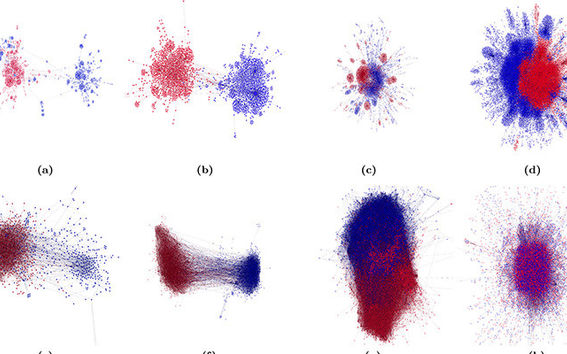Aalto researchers aim to enrich the online news consumption after quantifying the controversies

After quantifying the controversies of news topics in the social media the research aims to provide users tools to improve the variety of news consumed online, even to break out of their own echo chambers.
- Our first research question was whether it is possible to find out if a topic is controversial or not - in other words, whether we can calculate a controversy score for a given topic, says Doctoral candidate Kiran Garimella.
The researchers studied ten Twitter conversations associated with hashtags that are known to be controversial, such as #ukraine and #beefban, and their retweets, follows, keywords and combinations of these. In comparison they also studied ten benign topics as well, such as #mothersday and #FF. The research shows how to analyze the diffusion structure of a given topic in a social network, and quantify the degree of controversy for the topic.
We decided to focus on controversial topics, as we believe that they introduce larger bias.
- We decided to focus on controversial topics, as we believe that they introduce larger bias: given a controversial topic people tend to take sides, and as news that support their side are more palatable, they end up ignoring and, critically, not endorsing news from the other side, continues Kiran Garimella.
The phenomenon of taking sides is known to create echo chambers, and they have been also identified in previous studies.
- Next steps of the research are to automatically identify controversial topics on social media and subsequently provide users with news recommendations from all sides of a controversy that would enrich and balance their news consumption, says Professor Aristides Gionis.
- Our ultimate objective is to empower users to analyze, visualize, and ultimately control their news diet, and eventually give people the tools to improve the variety of news they consume online, if they want, and break out of their echo chambers, concludes Kiran Garimella.
Motivated by the fact that most people nowadays read their news on social-media platforms, such as Twitter and Facebook, Kiran Garimella, Gianmarco De Francisci Morales, Aristides Gionis and Michael Mathioudakis decided to study news consumption on social media. The long-term goal of the project is to understand how people perceive the world via their news feed, and find out how to improve the news-distribution process by eliminating bias and increasing objectivity.
More information:
Aristides Gionis
Aalto University
[email protected]
Michael Mathioudakis
Helsinki Institute for Information Technology HIIT
[email protected]
Tel. +358 50 430 2217
- Published:
- Updated:
Read more news

Get to know us: Associate Professor Maria Sammalkorpi
Sammalkorpi received her doctorate from Helsinki University of Technology 2004. After her defence, she has worked as a researcher at the Universities of Princeton, Yale and Aalto.
Aalto computer scientists in ICML 2024
Computer scientists in ICML 2024
Getting bacteria into line
Physicists use magnetic fields to manipulate bacterial behaviour